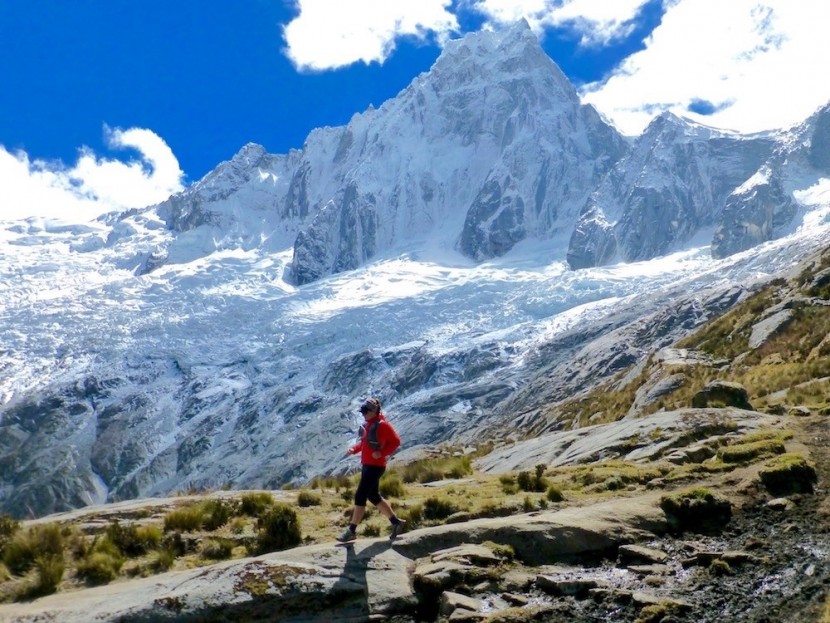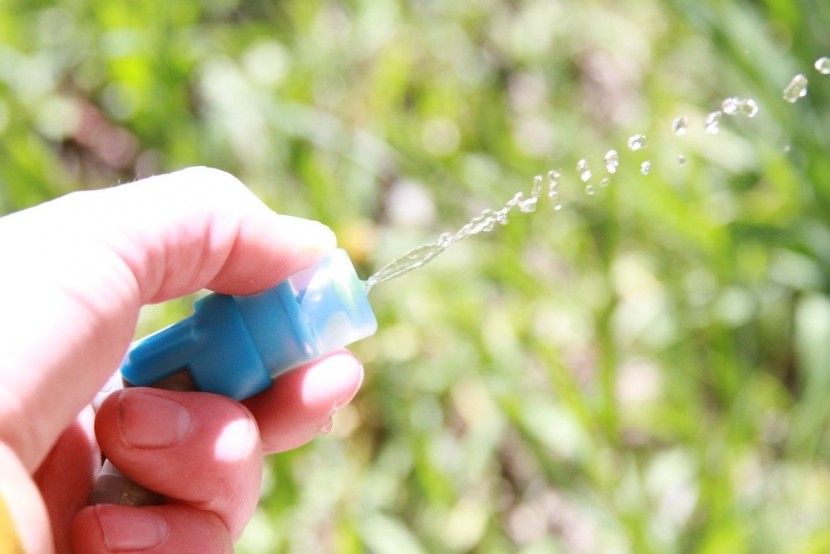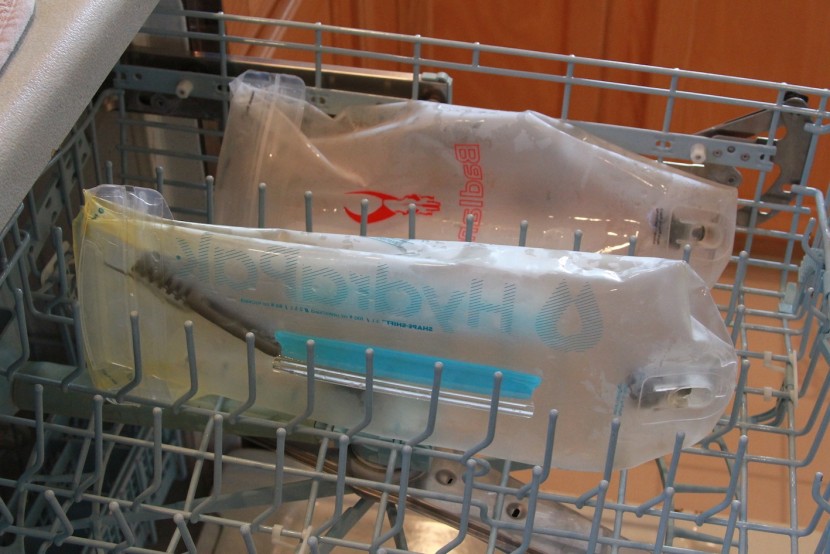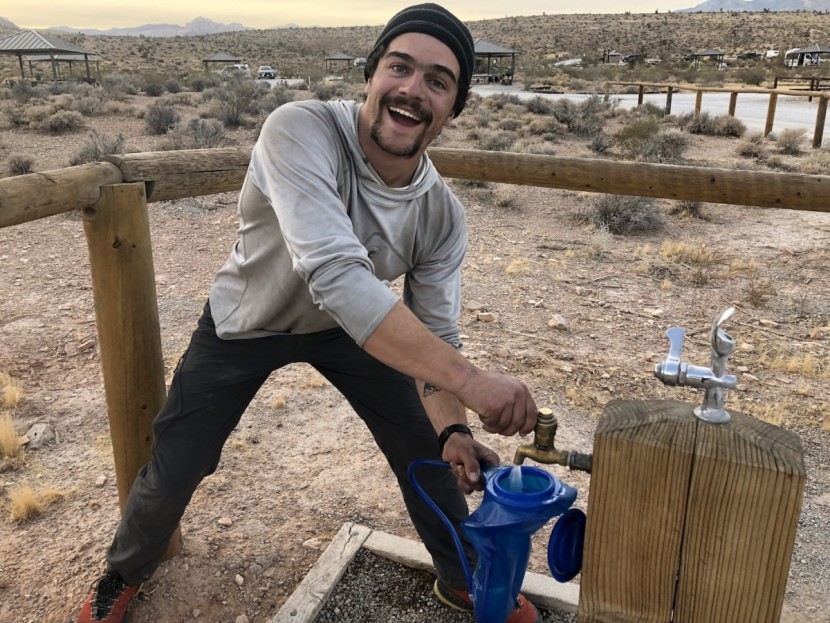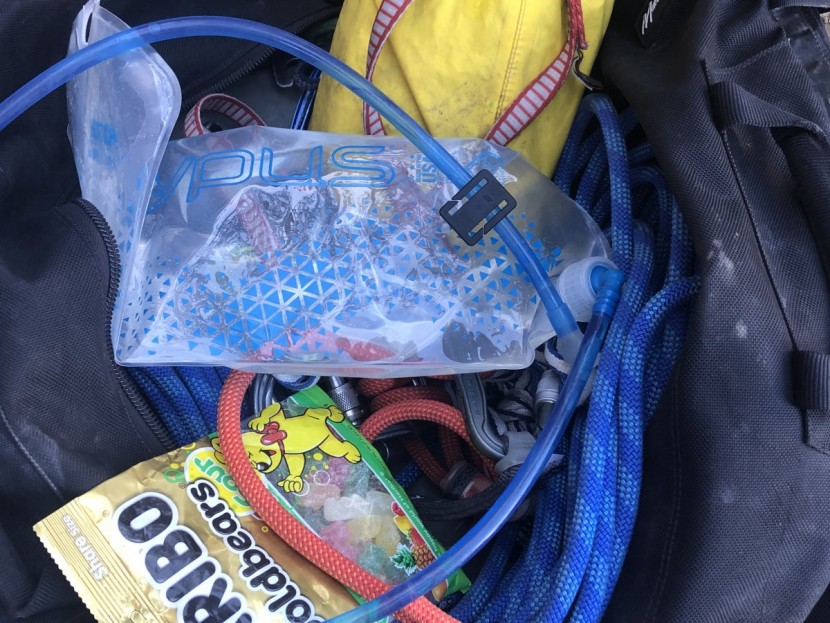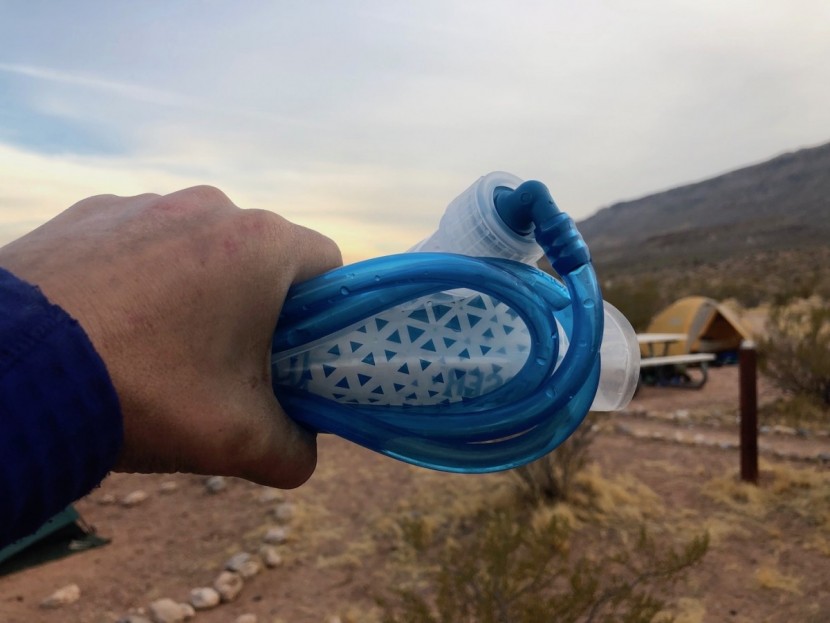The testing over the last few years has been whimsical, with many different adventures. We took the time to test each bladder hands-on through a variety of activities. We've traveled from the high mountains of the Andes to the high seas of Iceland. On our adventures, we've taken each bladder with us for running, hiking, biking, climbing, and more. In addition to our in-field tests, we objectively evaluate the craftsmanship and performance of each bladder, taking detailed notes and comparing them side by side. To evaluate each product, we focus on five key criteria, which include ease of use (25%), ease of care (25%), ease of filling (20%), quality and durability (15%), and weight & packability (15%). Below, we outline how each of these metrics is tested in a hands-on manner.
Ease of Use
To test this, we evaluate the types of hoses, valves, and mouthpieces used in the construction of the drinking apparatus. To do this, we note which offers more water readily, without having to suck too hard. We also note the relative diameter of the hose and whether the pieces are interchangeable — in case you don't like one of the parts. We compare and contrast the options to determine which one offers the best water flow on the trail and note which ones are prone to leaking or lack a locking mechanism. Those with a better flow and use on the trail tend to perform better overall.
For insulated models, we placed each one in the freezer and used backpacks on sunny days to see how the insulating properties actually worked. We compared these against normal bladders to see if there was a significant difference.
Ease of Care
To test this, we used each bladder with straight-up water and sugary mixes. We filled them up, sucked them dry, rinsed them out, and left them to dry. We take note of which bladders can flip inside out or are dishwasher safe. Those that are the easiest to maintain, both in terms of construction and materials, do best in this category.
Ease of Filling
We filled these bladders with water from various sources — streams, rivers, lakes, boats, taps, and even shallow ponds. Those that were easiest to fill up (to a full ~3 L) did the best. Those that are the easiest to close on the go also do very well.
Quality and Durability
This is a hard metric to test with our limited testing time. However, we continue to test our award winners for months after our preliminary tests. During our testing period, we put them into backpacks loaded down with gear, throw them around at the crag, and simply use them for at least 40+ hours. After this testing period, we examine any potential issues with quality and durability and make a note of them. Additionally, we review online reviews from verified reviewers to gauge their thoughts, especially those who have been testing longer than we've. If there's a red flag, we test it out, simply to see if we note any problems. Those that are more puncture-proof and have a seamless construction do best.
Weight and Packability
We weigh both the hydration bladder and the hose to see how many ounces each will add to your outdoor kit. For the ultralight-minded , we roll each up, simply to see how it'll stash away when it's not filled. We then compare each product side by side to determine which is the best.

